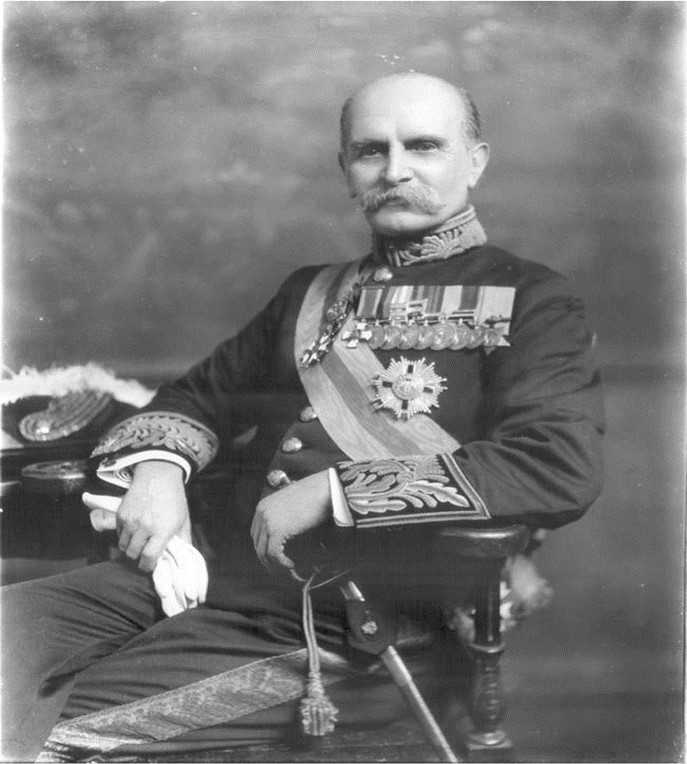Origins of the Malawi Defence Force

The Malawi Defence Force’s roots stretch back to approximately 1888. At that time, it emerged as a semi-official force in Blantyre, Malawi. Its primary mission was to combat Swahili and Arab slave traders—a noble cause that resonated with the African Lakes Company (ALC). As Nyasaland (now Malawi) took shape, the MDF played a crucial role in securing the region. Its duty extended beyond military matters: It safeguarded early white settlers and maintained order in British Central Africa. Captain Fredrick Lugard led the MDF during its formative years. His vision and strategic acumen shaped the force.
Notably, Captain Lugard was no stranger to organizing armies. He had previously been engaged in similar efforts in Uganda and Lagos, Nigeria. His journey did not end in Malawi. His leadership prowess caught the attention of colonial authorities. Eventually, he ascended to the position of the first Governor of Northern Nigeria—a testament to his impact and legacy.
Birth of the Nyasaland Protectorate Army
On May 14, 1891, the Nyasaland Protectorate Army came into existence. This coincided with Nyasaland’s status as a British Protectorate under the British Central African Rifles. Initially, the force comprised Indian troops recruited by Harry Johnston—a diverse ensemble ready for duty.
Evolution of Names
Over time, the force transformed. In 1896, it became the British Central African Rifles. By 1898, it adopted the name Central African Regiment, accommodating various nationalities. The prefix “British” was dropped in 1898, emphasizing its regional identity.
Formation of the Second Battalion (2CAR)
On January 1, 1899, the 2nd Battalion CAR emerged. Its composition included British soldiers, Sikhs, and native troops. The 2nd Battalion was swiftly deployed to Mauritius for policing duties.
Somaliland Mission
In 1900, the 2nd Battalion faced a critical test. It was dispatched to Somaliland to quell an insurrection led by the infamous Mad Mullah. Meanwhile, the 1st Battalion CAR danced its own steps: serving in the Ashanti Campaign in Kumasi under Major A. S. Cobbe.
The Return Home
In 1901, the 1st Battalion of the Central African Rifles (CAR) returned home under Major Cobbe’s leadership. They settled at Cobbe Barracks in Zomba—a place forever etched in memory. Cobbe Barracks received its name as a tribute to Major Alexander Cobbe—a gallant officer who left his mark on the regiment. Later that same year, the 2nd Battalion also returned, completing the ensemble.
The Birth of Kings African Rifles (KAR)
In 1902, a grand amalgamation occurred. All British Forces in East and Central Africa merged into the Kings African Rifles (KAR). Brigadier General William Manning conducted this symphony of consolidation, overseeing forces across the region. The KAR birthed six battalions, each with its own stage: Nyasaland, Kenya, Tanzania, Uganda, and British Somaliland.
Central African Battalions
Malawi, then known as Nyasaland, formed its first and second battalions—the Central African Battalions. These battalions were composed of enlisted troops (askaris) drawn from the native inhabitants. While the enlisted ranks reflected local diversity, most officers hailed from the British Army. This blend of leadership styles—native and British—shaped the battalions’ choreography.
KAR in Civil Service
The protectorate administration seamlessly integrated the Kings African Rifles (KAR) into civil service. It became more than a military force; it played a dual role, serving both security and administrative functions. The soldiers of Malawi’s Defense Force wore multiple hats. They fulfilled both military duties and internal security functions within their territories.
World War Contributions
During the two world wars, these troops stepped onto a global stage. They fought alongside the British against the Germans in various theaters: in Tanzania, Somalia, Kenya, Abyssinia (now Ethiopia), and Burma (now Myanmar). Their valor and contributions significantly bolstered British victories.
Birth of the Malawi Army
On July 6, 1964, as Nyasaland gained independence and became Malawi, the Malawi Army was born. The Second Battalion of the Kings African Rifles (KAR) transformed into the first Battalion of the Malawi Rifles, stationed at Cobbe Barracks in Zomba.
Passing the Baton
Brigadier General Paul Lewis, the last Commander of the 1st Battalion KAR, handed over leadership to the 1st Malawian Commander, General Graciano Matewere, in 1971.
Name Change
In 2004, the Malawi Army underwent a transformation. It changed its name to the Malawi Defence Force in alignment with the new Republican Constitution.
Campaigns
- Ashanti Rebellion in Ghana in 1900.
- Mutiny of the West African Regiment in Gold Coast - July 1900.
- Somaliland Campaign 1902 - against the Mad Mullah.
- World War I on British Side in Tanganyika.
- World War II in Somaliland Campaign - 1940.
- Abyssinia - 1941.
- Monsoon Campaign in Burma - 1944.
- Nandi Rebellion in Uganda - 1952.
- Malaya Campaign - 1953.
- Chisiza Insurrection - 1967-68.
- Operation Kwaeni - 1986-93.
- Operation Hacksaw - Disaster 1992.
- Operation Bwezani - 1993.